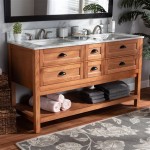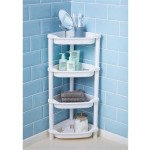Is Mold in Bathroom Dangerous?
Bathrooms are prone to mold growth due to the presence of moisture and organic matter. While some mold species are harmless, others can pose health risks, making it crucial to identify and address mold in bathrooms promptly.
What is Bathroom Mold?
Mold is a fungus that thrives in damp environments. It consists of tiny spores that can spread easily through the air. In bathrooms, mold often appears as dark spots or patches on shower curtains, tiles, grout, or ceilings.
Identifying Dangerous Mold
Not all molds in bathrooms are dangerous. However, some species, such as Stachybotrys chartarum (black mold), Aspergillus fumigatus (asthma-causing mold), and Cladosporium, can cause health problems.
To identify dangerous mold, look for signs of black, green, or orange discoloration, as well as a musty or earthy smell. If you suspect the présence of dangerous mold, it's best to contact a professional for testing and removal.
Health Risks Associated with Bathroom Mold
Exposure to dangerous mold in bathrooms can lead to health issues, including:
- Respiratory problems: Mold spores can irritate the lungs, causing coughing, wheezing, and respiratory infections.
- Allergic reactions: Some people are allergic to mold spores, which can trigger allergic rhinitis, asthma, and skin irritation.
- Weakened immune system: Mold exposure can suppress the immune system, making individuals more susceptible to infections.
- Mycotoxin poisoning: In rare cases, certain mold species can produce mycotoxins, which are toxic substances that can cause serious health issues.
Preventing and Removing Bathroom Mold
To prevent mold growth in bathrooms, it's essential to:
- Maintain proper ventilation: Ensure adequate ventilation by using exhaust fans during showers and baths.
- Reduce moisture: Keep bathroom surfaces dry by wiping down walls, counters, and shower stalls after use.
- Repair leaks: Fix leaky pipes and faucets to eliminate moisture sources.
- Use mold-resistant materials: Consider using mold-resistant tiles, grout, and bathroom fixtures.
If mold has already developed in the bathroom, it's important to remove it promptly:
- Ventilate the area: Open windows and doors to allow fresh air to circulate.
- Clean with bleach: Use a diluted bleach solution (1 part bleach to 10 parts water) to kill mold spores.
- Scrub affected surfaces: Wear gloves and a mask to scrub moldy surfaces with a stiff brush.
- Consider professional removal: For large or stubborn mold infestations, it's advisable to seek professional mold remediation services.
Conclusion
Mold in bathrooms can pose health risks if left untreated. Identifying dangerous mold, preventing its growth, and removing it promptly are crucial for maintaining a healthy indoor environment. By following these recommendations, you can minimize the presence of mold in your bathroom and protect yourself from potential health issues.

Is Black Mould In The Bathroom Dangerous Dbs Bathrooms

What Do About Black Mold In The Bathroom Bob Vila

Black Mold In Shower Is It A Cause Of Worry And What To Do About Aqa

Why Is There Mold On My Bathroom A J Property Restoration Dk

Why Is There Black Mold On My Bathroom Ceiling Medics

How To Get Rid Of Mold In Bathroom 2024 Tips From Puroclean

What To Know About Bathroom Mold And When You Should Worry

How To Remove Black Mold From Your Shower Clean Tips

Mold In Shower Bathroom Types Mike Diamond Services

Cleaning Black Mold In The Shower
Related Posts







